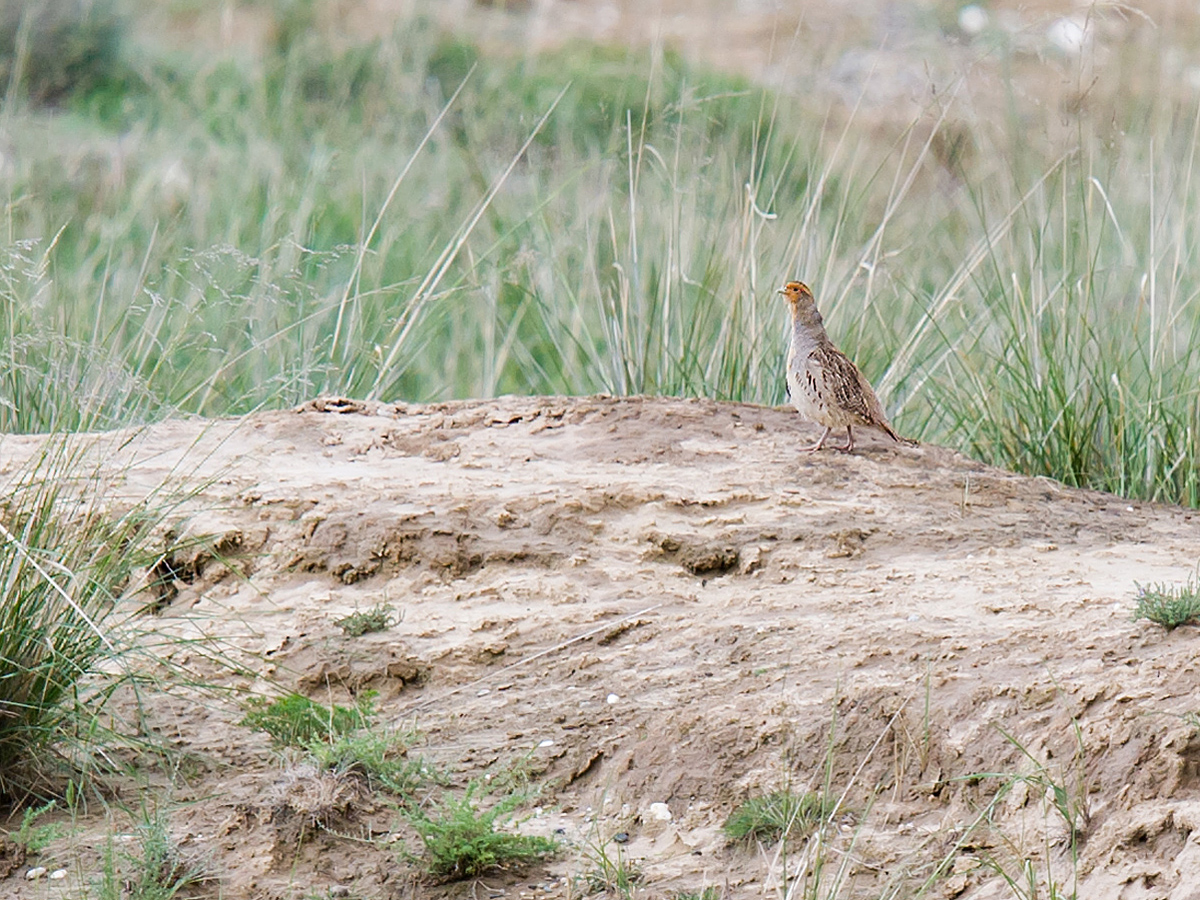
In China, Daurian Partridge Perdix dauurica dauurica in northwest Xinjiang and suschkini Qinghai to Heilongjiang. HABITAT & BEHAVIOR Grasslands, meadows, grain fields, and various other types of dry, open country, to 3000 m (9,840 ft.). Highly terrestrial, feeding on seeds and leaves; often in coveys of up to 30 individuals, especially in winter. Nervous, wary. When threatened from a distance, freezes or dashes for cover. When flushed, explodes into air, beating wings rapidly, then alternately beating wings and gliding. ID & COMPARISON Compact, rotund, short-tailed, “no-necked.” Male has orange-rufous face, eyebrow and throat, the latter showing a bristly “beard” (stiff orange feathers) in autumn and winter. Orange-rufous continues as a vertical band from throat down grey breast, forms patch above black patch (often horseshoe-shaped) on belly, and may even encircle it. Lower belly buffish-white, flanks gryer and barred dark chestnut. Head and upperparts mostly greyish-brown with dark-brown barring and vermiculations. Wings and scapulars more coarsely marked and with buff streaks; hindneck plain grey. Female duller, with smaller or absent belly patch. Grey Partridge P. perdix has chestnut belly patch and greyer crown and back and lacks orange-buff breast patch and beard. Females very similar, but female Daurian sometimes show beard. Juvenile looks like large quail but is more rufous-buff, lacks strong head markings and is stubbier and shorter-tailed than Daurian. Starts to molt into adult plumage in 2-3 months. BARE PARTS Bill grey; feet dull horn-yellow. VOICE Short, dry, crackly call, reminiscent of a door on a rusty hinge. — Craig Brelsford
ACKNOWLEDGEMENTS
Daniel Bengtsson served as chief ornithological consultant for Craig Brelsford’s Photographic Field Guide to the Birds of China, from which this species description is drawn.
